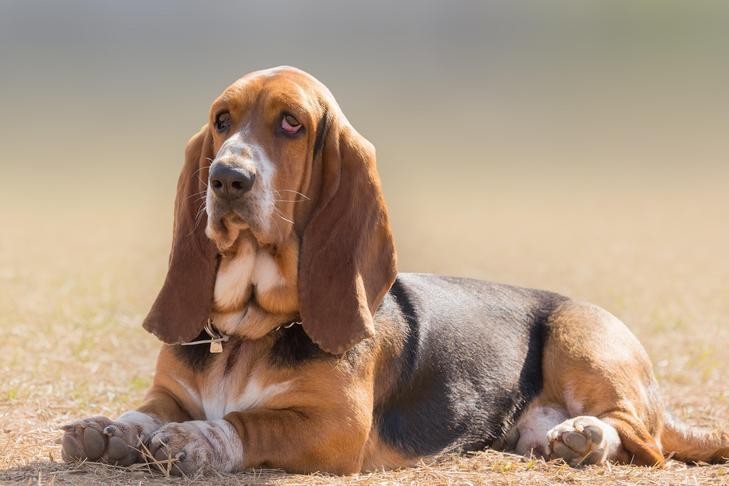
Short dogs with long, pendulous ears represent some of the most distinctive and beloved canine breeds. While their diminutive stature makes them adaptable to various living situations, their characteristically long ears serve important functional purposes beyond mere aesthetics. Originally bred for hunting and tracking, breeds like the Basset Hound, Dachshund, and Beagle use their lengthy ears to trap scent particles and direct them toward their powerful noses. These breeds combine their unique physical attributes with friendly temperaments and high intelligence, though some can display stubborn tendencies inherited from their working dog ancestry. Their enduring popularity as family companions stems from their manageable size and endearing appearances.
Short Dogs with Long Ears
Physical Characteristics and Benefits
Short-legged dogs with long ears, like the Basset Hound and Dachshund, have evolved these distinctive features for enhanced scenting abilities. Their long, drooping ears help capture scent particles and direct them toward their nose while blocking distant sounds, allowing them to focus better on tracking scents. The Basset Hound's ears typically hang down loosely, preventing debris from entering the ear canal during digging. Despite their low height under 15 inches, Basset Hounds can weigh 40-80 pounds, while Dachshunds stand 8-9 inches tall and weigh 16-32 pounds.
Exercise Considerations
Short dogs with long ears require moderate daily exercise appropriate for their build. Due to their short legs and long backs, activities should avoid excessive jumping or strain. The Basset Hound needs at least one good daily walk, while Dachshunds benefit from three shorter walks. Both breeds' exercise routines must account for potential back problems related to their unique body structure.
Basset Hound: A Short Dog with Remarkably Long Ears\nDachshund: The Long-Eared Wiener Dog with Hunting Heritage
Origins and Hunting Background
While both breeds were developed for hunting, they served different purposes. The Basset Hound originated in France in the 1500s for rabbit hunting, with its name derived from the French word "bas" meaning low. The Dachshund emerged from Germany specifically for tracking badgers and rabbits underground, utilizing their long ears to help maintain scent trails while burrowing.
Health Considerations for Long-Eared Breeds
These breeds require special attention to ear health due to their distinctive features. The Basset Hound's loose, hanging ears make them prone to infections and require weekly cleaning. For Dachshunds, their long ears can trap dirt while digging but help protect their ear canals from debris. Both breeds need regular ear maintenance to prevent infections and maintain optimal hearing capabilities.
Short Dogs with Long Ears
Behavioral Traits and Training
Short dogs with long ears like the Basset Hound and Dachshund exhibit distinct personality traits that affect training. While intelligent, both breeds can be stubborn and challenging to train due to their independent hunting heritage. Basset Hounds require firm, patient handling with creative training approaches to overcome their stubbornness. Dachshunds display a similar headstrong nature but respond well to positive reinforcement. Early socialization and consistent training are essential for both breeds to manage their strong prey drive and tendency to follow scents. Their long ears make them excellent tracking dogs but can also lead to selective hearing during training sessions when they pick up interesting scents.
Living Space Requirements
Despite their small stature, these breeds have specific space needs. While adaptable to apartment living with adequate exercise, they require secure fenced areas due to their tracking instincts. Both breeds may dig or attempt to follow scents if not properly contained. Indoor spaces should accommodate their long ears by keeping water bowls and feeding areas clean to prevent ear-dipping.
Conclusion
Short dogs with long ears, particularly Basset Hounds and Dachshunds, have evolved unique physical characteristics that serve specific hunting purposes. Their distinctive long, drooping ears enhance scenting abilities by capturing scent particles and blocking distracting sounds, while their short stature allows for effective tracking close to the ground. These breeds typically stand under 15 inches tall, though their weight can vary significantly between breeds.
While these breeds make wonderful companions, their unique physical traits require special consideration for health and lifestyle management. Regular ear maintenance is essential to prevent infections, and exercise must be carefully moderated to protect their long backs and short legs. Their strong hunting instincts and independent nature necessitate patient, consistent training approaches and secure living spaces. Understanding these breeds' specific needs in terms of physical care, exercise, and training is crucial for ensuring their health and happiness as pets.